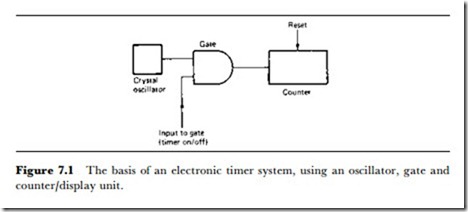Environmental quantities
In the course of the preceding chapters, sensors for many quantities that are of environmental importance, such as wind velocity, have been mentioned. This chapter is concerned with some types of quantities and sensors which have not been covered previously and which are all in some way related to the environment. Some of these quantities need to be sensed in connection with industrial processes, and a few are of considerable importance in all aspects of life, but others are decidedly specialized.
All the devices that are considered in this chapter are sensors or measuring instruments, because none of the quantities is an energy form that permits conversion. There are, of course, natural forms of energy from which efficient transducers would be useful. The low concentration of energy (the amount of energy per m2 or m3 of transducer) is usually very much against the use of such devices. It may seem attractive at first sight to generate electricity from wind or waves, but the size of any useful generator is daunting. It is most unlikely that our multitude of amateur environmentalists would ever permit such monstrous contraptions to be built in the huge quantities that would be needed if more than a small fraction of fossil fuel and nuclear sources have to be replaced. Practical gen- erators for large-scale generation must make use of processes such as com- bustion and nuclear fission which have a high energy concentration. Although the efficiency of conversion by way of steam may seem low at around 40%, it is very much better than is obtainable from other types of transducer systems, few of which ever look like bettering l0% with any degree of reliability.
Time
The measurement of time is fundamental to many industrial processes as well as to civilized life in general, but it is only comparatively recently that electronic timekeeping has become important. Our units of time are based on the solar year, the average time that the Earth takes for one revolution around the Sun, which is about 365.25 days. Astronomical determination of time is not exactly an everyday practical method, so that clocks and watches have been developed for convenience, and have traditionally relied on mechanical oscillations for a stable standard of frequency. Extra- ordinary efforts have been made in the past to achieve high precision of timekeeping because of its importance in navigation, but the limitations of a mechanical system have always determined what could be achieved. Really precise timekeeping has only now come about because of the application of electronic methods.
Electronic time measurement makes use of the crystal-controlled oscillator. The piezoelectric properties of the quartz crystal make it an excellent vibration transducer, and if the crystal is cut so that it resonates mechanically, it will act electrically as if it were an electrical resonant circuit with practically no losses. This implies that the frequency is very stable and that the oscillation can be maintained with very little energy input. For domestic electronic clocks and watches, this stability is sufficient, so that a cheap digital watch is a better timekeeper than the most expensive mechanical timepiece of a previous generation. For much more precise timing, the crystal should be kept at a constant temperature, and crystal standard- frequency generators have been built to this specification for some consider- able time, since long before digital counting and displays were available. For the utmost stability, maser oscillators are now available.
The display of time or the measurement of time intervals can make use of digital methods, counting the waves from the crystal-controlled oscillators. If the system is to be used as a timer, a gate circuit must be added (Figure 7.l) so that the counting can be switched on and off. The digital counter then starts when the gate is switched on and continues until the gate is switched off, with the count number being held (whether it is displayed or not) until another count is needed. If the gating is placed between the crystal oscillator and the counter, then the resolution can be to one oscillation, so that the frequency of the oscillator determines how precise the
timing will be. A frequency of around 4 MHz is commonly used for crystal oscillators, allowing a resolution of around 250 ns. If the gating and counting circuits can use high-speed ECL ICs, then much higher master oscillator frequencies can be used, up to the GHz region.
